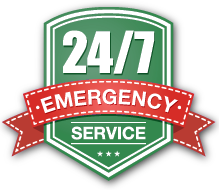Water damage in your home can result in everything from structural problems with the building to ruined furniture, appliances, rugs and carpeting, clothing and linens, libraries, and art works—i.e., thousands of dollars worth of damage. Many problems that occur in your home are unavoidable; leaking pipes are not. And almost everything that can be done to avoid leaking pipes is action that you can take yourself.
The first and easiest proactive step you can take is to check the pipes under your kitchen and bathroom sinks regularly for early-stage leaks. Next, check all your appliances such as the washing machine and dishwasher on a regular basis—and don’t forget the water connection to your refrigerator’s ice-cube maker. In addition, catching and fixing any dripping outdoor taps can prevent damage that might seep through an outside wall.
The key element here is regularity, of course; you want to catch these things at the earliest possible stage. It doesn’t take but a moment to open the under-sink cabinet and feel around the pipe, or to get a wrench and tighten a fixture on a faucet, but the upset and expenditure you may avoid can be enormous.
Some of the most serious water damage results from pipes containing water that has been allowed to freeze in winter, cracking or damaging the piping so that when water flow resumes, it goes where it shouldn’t. Before winter arrives, check all outside or unprotected piping to be sure it is properly insulated, and check it frequently during the winter months.
If you are among those lucky “snowbirds” who spend winters elsewhere, a simple but effective strategy for preventing freezing pipes is to set a lowered but constant temperature in the residence while you are away. You might also ask a friendly neighbor to check on outdoor pipes and faucets from time to time during your absence.
Forest fires are not the only thing that “only you” can prevent!



